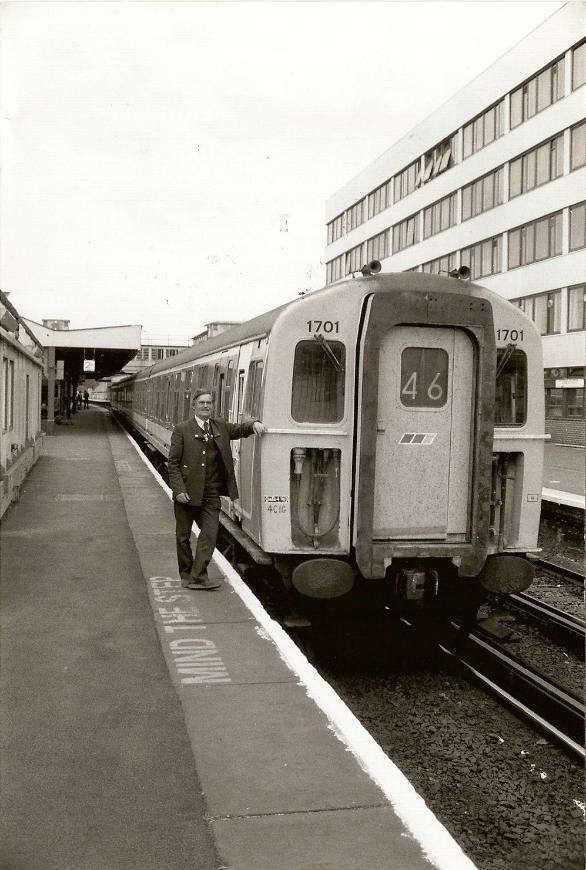
My Newhaven Days
By Newhaven Engine Cleaner, Fireman & Passed Fireman
When I was 12, I asked my dad if I could join the sea cadets, he said “providing I could come up with the subs”. So I went to our local newspaper shop “Whites” for a job, it entailed me getting up 06:00 hrs. and I had to walk to the (Newhaven) Town station, where I met the ‘paper train’. We loaded the bundles of newspapers on to a wheelbarrow and took them back to the shop to sort out orders prior to them being delivered around the town. I had that job for 4 years unloading the newspaper of the ‘paper train’ at the station. It was during this time where I got to know a man called Ted Evans. Ted allowed me to sell some papers at the station Town station to the commuters. It was only later on after I joined the railway service that I found that Ted was the man that coaled our engines at Newhaven. I carried on with my paper job even though I was now working for the railway, at the time on the railway we could not do shift work until we were 16 years old. By continuing with my paper job, this helped me financially to cope during the 1955 A.S.L.E.F. strike.
My days of work on the A1Xs at Newhaven Loco started very early in my working life as a cleaner when we had to light up the engines fire at 3-30am ready for the driver Booking on at 5-30am. By 6-30am she had enough steam to leave the Depot to take the oil tanks and harbour works wagons over the swing bridge to the west quay and breakwater.
On a trip to the Breakwater was like a military operation. We stood beside the goods shed awaiting the shunters instruction that the Gates were open for us and the traffic had been stopped so that we could proceed foreword with the shunter holding his Red Flag up to and over the swing bridge to the Works compound west of the bridge where we would pick up the supplies for the Lighthouse crew. Then we would proceed to the next set of gates by the Bonded warehouse and sheet loft, then continue on to the Fuel Tank for the Mail Boats, then on to the next gates at (the green light) and when clear continue on to the Breakwater and right down to the Lighthouse where we would run round the train in the loop which was there until 1963 when the West Quay closed, we then returned back to the bridge Works where we had to wait for all traffic to be stopped so we could proceed back across the bridge to North Quay where we shunted the train and returned to the depot where we took on coal and water threw out the fire and stabled for the night.
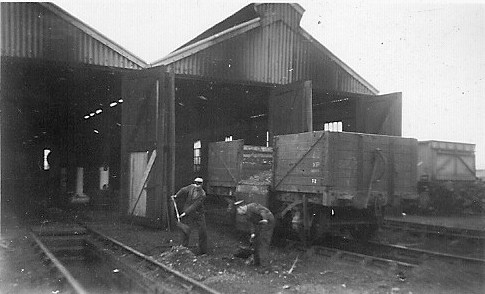
RON TERRILL COLLECTION
Above and below: Firemen Brian Simpson & Ron Terrill shovelling out ashes, cinders etc., from the pits roads outside the Newhaven Loco Shed.
I started at Newhaven Loco Shed on the 13th September,1954. If I had started at Brighton Loco Shed I would have been thrown in the deep end and firing from day one. I was taken on at Newhaven as an Engine Boy and worked with boiler-smith Bill Gerard and his mate George Ball for 12 weeks to learn all about the boilers, gauge glasses, lead plugs and the like. I was very curious so I learnt very quickly how to build brick arches and change ferrules on the tube ends.
The next 12 weeks was spent with the Shed’s Fitters Fred Catlin and his mate Fred Rainer our two fitters, where I found out the names of all the bits and pieces of all types of motions (Stephenson’s Link), Walsharts, cabbrotic gear etc. we did a lot of work at Newhaven Depot rather than sending the engines back to the works at Brighton.
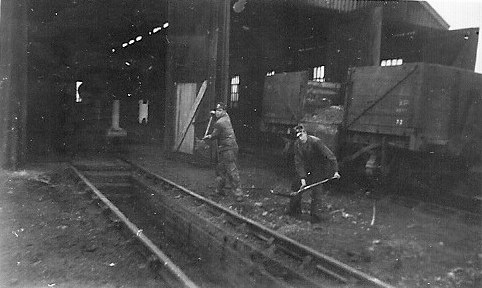
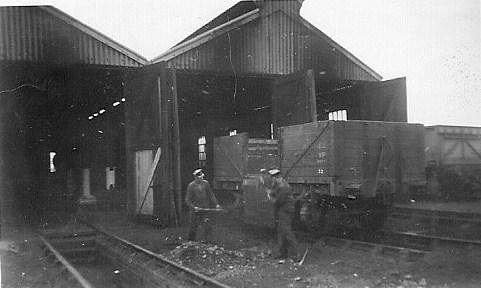
About 1955 it was normal practice for footplateman to have 15per cent of there money deducted for the Railway Bank so as to make them a sure candidate for a later tenancy to rent a house from the company! I did that although it took me until 1963 to get a railway house. (Inwood Crescent) next to Crompton Road, Brighton. It was only a one bed flat but it, was a home! Most of the railway housing in Newhaven was for Harbour employees, about 150 houses in the 1950s. Where I live now is on the opposite side to the houses which were for (the Salaried Staff) only. They were good times then! Now there are only 14 railway houses left the others were taken over by the council or have demolished.
I was glad that after my probation period was up I then went in front of the big man for my exam as a cleaner. The big man Mr. Bert Copp turned out to be quite a small man, but certainly new his job. He was responsible for putting me the first rung of the ladder to become an Engine Driver.
RON "BURGLAR BILL" TERRILL
When I was a cleaner at Newhaven in 1955, a driver Ted Tucknott came in to work where he realised that he had left his locker key at home. The shed foreman at the time was Frank Heritage, and he could not find the locker master key. I thought that I would try and help by trying to make a key. We had still got the fitter’s bench and tools, so I cut out a rough template of the key and to my surprise it worked and opened Ted’s locker, it saved a possible duty cancelation at the time. After this I was known as 'Burglar Bill' .
My burglary activities continued when we moved from the (Brighton) loco works lobby to the new lobby up the stairs, on several occasions Chucks locked himself out of the office and so did Les, and I was successful each time. I never did anything illegal, although I was trained later by a builder who worked for an estate agent to enter properties with the police present.
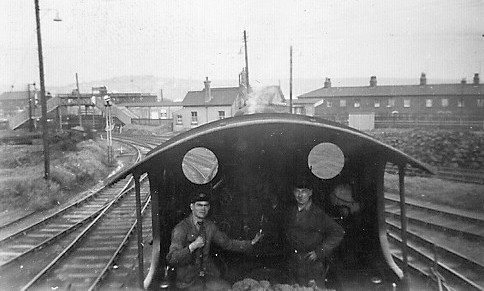
Ron Terrill Collection
Ron Terrill & Johnny White
On the footlplate of a 'H2' Class Atlantic in Newhaven Loco c1955
At this time we had several relief foremen at Newhaven, after the death of Bob Shimmons our Shedmaster in 55/56. The relief foremen included Chuckles (Ernie Southon) and my father Bill. Incidentally when Frank got a railway house at Haywards Heath, he did not need his car any more so I bought it from him for £35, it was an ex-army staff car a Morris 12.
The Loder hut was situated between the Loco & Denton Terrace (where Vic Sexton used to live). Denton Terrace consisted of 4 four story houses next to the Railway inn. the Loder hut. It was of wooden construction and was complete with a stage, after the Second World War, it was used as a cinema, a general meeting place for railway people, I suppose it was similar to the staff club. There use to have shows put on like (magic shows) I remember seeing a Woman being sawn in half on the stage . It was latter then used as a Scout hut.
I wish to tell you about My first girl friend whose parent were scientist (Atomics), they worked at Aldermasten and commuted by train to work until they were transferred to Ellesmere Port in Cheshire, so I lost my girl. Anyway I helped them to take all their domestic belongings to Newhaven Goods Shed where we loaded them into a box wagon and the wagon was taken to Chester by Freight train (I think at the time it wasn't unusual) after all we used to take coffins on the trains quite often. I don't know when that service ceased because we were still doing it on the electrics. I also remember taking a Circus train from Newhaven Harbour to Kensington with Reg Turner!
Incidentally I remember Ben & Dave Renville using a Box Wagon up the Coal Road as a store for Staff Associations first club room in c1954/5, this was before the British Railway Staff Association Club was built. Also on Station Approach Road there was a bikes and a cafe called Lucas, where we used to buy ham rolls for Bob Shimmons our foreman.
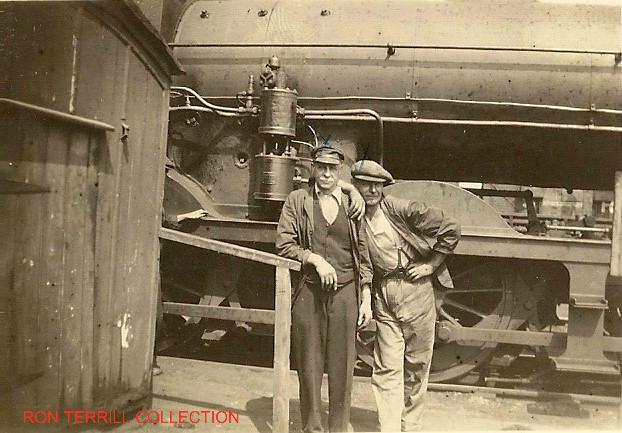
RON TERRILL COLLECTION
Charlie Green & Jack 'Bogey' Simmons
When we were the junior cleaners at Newhaven, one of our jobs was to bring all the paper work and driver’s bills (time sheets) from Newhaven to the offices at Brighton loco for Peter Freeman, Jack Barber and Bert Kidwell to do our wages. Charlie green who was our cleaners foreman in 1955, I can remember him catching Brian Tompsett, Frank Moody, John White and myself in the firebox of an Class H2 Atlantic No.32426 'St Albans Head', playing cards,we had two locos stabled at the shed out of steam, in case the hornby broke down. Our punishment was to unload a truck of sand in the sand furnace, heavy work!
As cleaners we had a bin full of pebbles, which we brought back from the West beach by the terrier A1x. We used them to keep the clinker off the bars in the firebox for when we had rubbish coal, some of the coal came from the railway collieries in Kent, Tillmanstone was the worst and Snowden was good. We also had bricketts which were made of compressed anthracite (coal) which was very good, but made a lot of clinker and ash in the smokebox.
When I was a junior cleaner, it was common place for a cleaner to ride as a third man on an engine. This was always subject to the driver permitted giving his authorisation for the cleaner to ride on his engine. On one such job, was on the Seaford goods, were I went on the footplate to Seaford. At arriving at Seaford, we shunted in the yard and then returned back to as far as Tide Mills. At Tide Mills there was a cattle dock, which held one wagon. We picked up some sheep and took it to the middle yard at Newhaven, where they were attached to the Lewes goods. I had to return back to the loco depot.
I expect they thought Lewes was too far for me!!
When you approach Newhaven from the whistle board to the box on down side, there were two tracks (called cabbage patch sidings)and between them and the road (where the factories are now) we had about 25 allotments for railway staff. When staff were on shed duties they would go and do a bit of digging and plant a few greens. As cleaners when we were free, we used to pick strawberries and chase the rabbits away from the crops. We also used to grow Jerusalem Artichokes instead of potatoes, because they were easier to grow on our allotments and we could harvest them most of the year
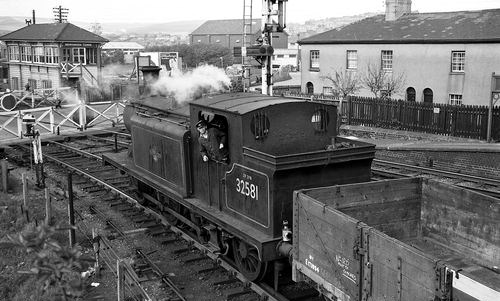
PHOTOGRAPHER UNKNOWN
Engine-man is thought to be Ron Terrill
At the time we were working 48 hours a week, it was not until after the 1955 strike, that we got one weekday off every month (4 weeks), but we had to work 3 weeks of 48 hours to get one week of 40 hours. You had to think about whether it was worth your while to do overtime in the beginning of the week, because if you got back early from a job you didn't get paid your full days pay so you would have to wait until your official booking off time before you could start your overtime rate.
At the time we were working 48 hours a week, it was not until after the 1955 strike, that we got one weekday off every month (4 weeks), but we had to work 3 weeks of 48 hours to get one week of 40 hours.
After the 1955 strike we were very low in Loco coal, at all the depots, we had a stack of coal left from the war years. I remember taking an engine and one wagon (see photo above, I was unaware that a photo was taken or the engine's number at the time) to the gates and reversing up the bank road to the coal stack, where I spent 4 hours loading the wagon and the engines bunker with coal and finally returning to the coal stage in the loco shed were I left it for the coal-man, Ted Evans to unload.
We had a link which was not on the main roster and was known at Newhaven as the ‘3P Link’ (I don't know why for certain). The link was always in pencil and often changed each day. The ‘3P Link’ consisted of three senior ‘Passed Fireman’ and three senior ‘Passed Cleaners’. Bearing in mind you only got paid your lowest rate of pay unless you were upgraded to do a job. It was done on strict seniority then. On reflection I wonder if the 3Ps stood for 'Possible Promotional Payment', because if they didn’t run you got flat pay. The work in the 3P Link was for performing extra work at short notice, like collecting empty wagons from various yards and bringing them back to the ‘Wagon Pool’ at Newhaven. We used to have a pool of wagons at Newhaven which consisted of about 250 common users wagons and about 40 box wagons. The box wagons where used on the ‘Boat Trains’ and were kept in the ‘Wagon Pool’ in case we needed any extra box wagons for boat workings.
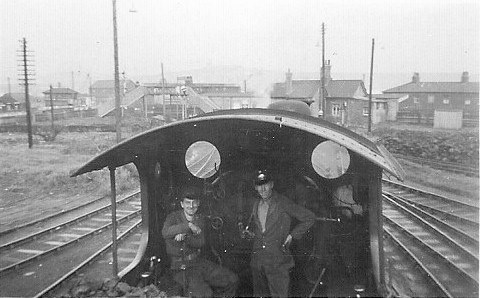
Ron Terrill Collection
Johnny White & Brian Simpson
On the footplate of a 'H2' Class Atlantic in Newhaven Loco c1955
At the time I believe that Newhaven loco had three main line links: - a 'Top link' of 12 men, a dual-link of 8 men (with the men transferring to the Motormen’s depot at Seaford), a 'Freight link' of 12 men and 3 pilots turns that worked the pilot engines for 24 hours a day, and one 'West Quay' job which was worked by a Terrier Tank No. 32636 ‘Fenchurch’, which was one of the regular Terrier engines based at Newhaven and was formerly owned by the Newhaven Harbour Company 1889-1926.
Later on in my career, and whilst training, on the ‘Hornby’s.’ I met Bob Drapper, Jack Macathy and Bert Harding who seemed to be the main men to convert us from steam to electric and to diesels. I enjoyed my years on the steam rather than electric and diesel locos that I ended up driving.
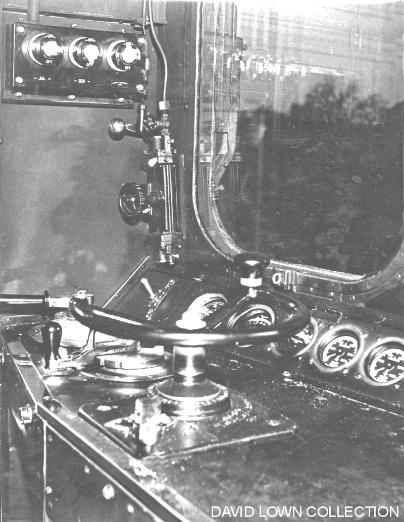
above the cab layout of one of Bulleid’s Electric Loco 'Hornby'
We had a duty at Newhaven with the electric loco Co-Cos (Hornby), we relieved at Newhaven Harbour station and worked the 'Boat Train' to Victoria. On arrival at Victoria the pilot engine took the coaching stock to Yeardly sdgs., and we then went light to Bricklayers Arms via Crystal Palace. On arrival at North Kent East signal box, we had to raise the pantograph to enter the mail dock to pick up two vans, then back to Mercer’s crossing where we would lower the pantograph then back to ‘J’ section, where we then waited for the shunters permission to go back on the train, which meant going off the juice rail and relying on booster power to get us on to the train create the brake, then pull forward to Bricklayers Arms signal box and wait for the banking engine to get on our rear when we got the road the banker. The banking engine stayed with us to Forrest Hill, we carried on to Three Bridges and then on to Lewes East yard, where we left the train and went light engine to Newhaven Marine station.
On occasions we used to bank freights from Bricklayers Arms to Forrest Hill. Even the Hornbys. They didn't need a push, it was in case of if they broke away we were there to stop them.
Whenever we left an engine at Bricklayers Arm loco, the foreman used to supply a couple of Heavies! to escort us to London Bridge station, even if we didn't want them.
I remember when we relieved the Boat Train at Newhaven Marine we had to uncouple and run forward off the juice rail into the sidings and then run around the train purely on booster power. The power lasted about 10-15mins on Flywheel so we would cross our fingers everytime hoping we would make it OK. The engine weight was 100tons with a tractive effort of 42000lbs and was built 1941-1945 and the last one 20003 was built at Brighton Works.1948. No 12 road in L.W.S.had a section of overhead wire for pan testing. There was also a wire in the down siding at Balcombe for stabling the Hornby. But servicing for the Hornby was normally done at Stewarts Lane (electric sheds).
When they increased the load on the Hornby’s to equals 117 wagons the load for most trains was equal 85 max. which meant a loaded wagon was 20 tons approx.
Some of my memories about No.1, she had a controller like a Regulater which had a grip device that acted as a dead mans handle, she also had I believe 21 notches in series, and further notches in weak field which you obtained by depressing a block under the controller. We had to take water on board via the water crane the same as we watered class 47s. They had two 1 ton boosters, one of which also run the auxiliary like the boiler heating. The boiler pump for steam heating and of course the Compressers and the Vacuum Exhausters. No1 also had a big knife switch to connect to the juice rail, there was a serious incident at Three Bridges when my driver for the day, was Waters of Horsham loco, he went to cut out the main switch, and he came into contacted with 750 volts, which badly burnt his wrist and had to be taken away by Emergency Service. I also remember ( firing) to Horsham men on trips to Portsmouth Harbour with mail vans.
Locos No2 & 3 had wheel controllers but were otherwise identical to No 1 except for the Pantograph system.
When we eventually got the E5000 class with single booster and Pantograph which we used for Boat train, Parcel trains, and also loose coupled freight.
The introduction of Bo-Bos electric locomotive were introduced in 1958 (Class 71) although we did not get them at Newhaven until about 1960, to work the Boat Trains. They were 3000 H.P. all electric single booster with pantograph and later went to the Western side, where they put a 600H.P. diesel engine in them.
The Boat Train was of course designed for steam working which meant that the heating was supplied by the engine and the lighting was supplied by the generators on the coaches, but gas used by the buffet/car which was supplied from a tanker truck of which we had to shunt the whole train into the sidings to gas it and return to the boat platform. That is why you often see it with an A1x on the front of the train to shunt it to the sidings and back and steam heat the train, plenty of power for 12 coaches & 2 vans. In the early 1960s, the Boat Train was worked by electric multiple units and worked by Newhaven 'Dual Link Men'. The E.M.U. trains finally replaced the Boat Train stock. With the closure of Newhaven shed in 1963, the work moved to Seaford E.M.U.T. depot
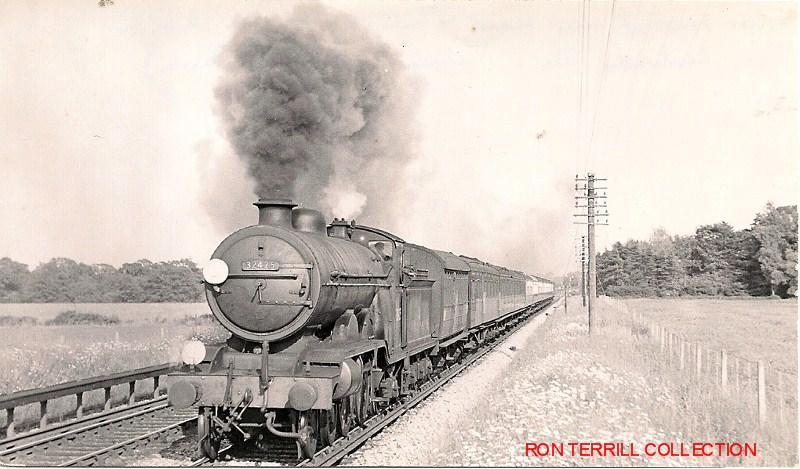
Newhaven Driver Maurice Smith is seen approaching Plumpton station with Class H2 Atlantic No. 32425, whilst working the 5.48 p.m. Newhaven Harbour to Victoria 'Boat Trian' on the 16th June 1951
DRIVER TOM DENMAM AND FIREMAN TOM HOLDER
I recall a story about a Newhaven loco crew, Driver Tom Denman and his Fireman Tom Holder. Driver Tom Denman was a hard man, who used to put a chalk line down the centre of his cab, this was to keep the fireman of his side of the cab. On one occasion they were working the up ‘Boat Train’ with an Atlantic class locomotive, when the donkey (a pump on a locomotive to create air pressure for the Westinghouse Brake) had stopped working whilst approaching Southerham Junction. The fireman went to front of the engine, because the donkey was under the smokebox to give it a clout with a spanner to restart it and fell off the engine. The Driver continued on to Lewes and phoned Control for another fireman. Poor old Tom had to walk all the way to Lewes to rejoin his engine. On rejoining his engine, his driver said to him where have you been (not how are you) and then blew up for the signal to be cleared, and they continued on to Victoria as if nothing had happened!
They were hard men in those days!!
NEWHAVEN GOODS WORK
Newhaven men used to work across the ‘Romney Marsh’ between Hastings and Ashford, one such turn involved us going tender first to Lewes with a few wagons and a brake van. We would run round at Lewes and then went to Hastings. At Hastings were we picked up a couple of more wagons then carried on to Rye. At Rye we dropped off a couple wagons then we stopped at Appledore and Ham Street where we would do the same. Ham Street at this time was only a coal yard. After leaving Ham Street we went on to Ashford yard. At Ashford we would take the engine onto the loco, whereby we had our P.N.B., and to prepare our engine for the return journey. We usually we had either a German class or a Mogul loco on this turn. We would bring our engine of the loco and go on to the rear of the ‘Birkenhead’, were we would run fast to Hastings then onto Eastbourne. At Eastbourne, Brighton men would take the train fast to Brighton. We would then run light engine to Polegate and picked up a few wagons and made our way to Lewes, where we would leave them and returned light engine back to Newhaven Loco. Newhaven men also use to work ‘Banana Specials’ to St Leonrds West Marina, Hastings and to Rye.
Another thing I remember well was when working back from Ashford with freight trains, we had to stop east of ore tunnel and pin 1 in 5 brakes down on the wagons, otherwise we would not stop at Hastings.
When I went back to Newhaven I went with driver Dave Renville, and several times we took an engine to New X Gate and picked up a couple of wagons that used to come from Shoreditch via the underground, hauled by a condensing steam tank engine, and take them to Norwood Yard then return to New X Gate and bank a freight up to Forrest Hill. Earlier on about 1956 the train from Shoreditch used to be worked by L.N.E.R. men and we as Southern men used to run alongside them at Norwood fork siding. On one occasion we offered them a cup of tea and they were very rude to us saying, we were to young to be working steam engines (even the fireman was about 60 years old), but by the end of the week they excepted us for being so young. Going back to what I said earlier I suppose they stopped signing the road to Norwood.
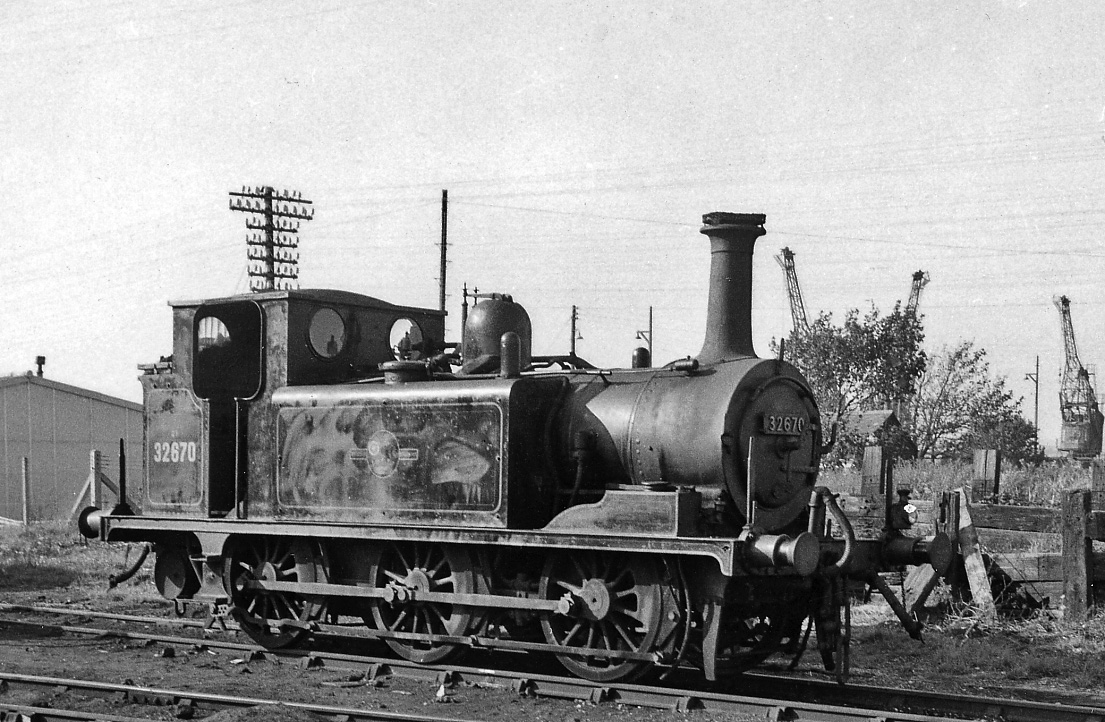
We had a lot of freight trains from Newhaven's North Quay including timber specials to Mitre Bridge (West London) and then we run light engine back to Stewarts Lane. After disposing the engine we would walk to Battersea Park station and travelled pass to Victoria and come home on the cushions.
We had three coal boats a week arriving at Newhaven, the coal was to supply the local gas works in the East Sussex area.. After the coal had been unloaded into the wagons, we had to shunt each wagon to enable them to be weighed before they were put on to the various trains. Each coal train had about 35 wagons with the train's total weight of approximately 700 tons plus the guard's brake van. These coal trains run regularly to various local gas works such as Galley Hill, Bexhill, Crowborough and Uckfield.
I worked a lot with Ron Herriott, he was a versatile travelling shunter who worked in Seaford yard, Asham yard and of course west Quay and breakwater.
We used to propel coal wagons from the North Quay to the middle yard without a brakeman the common practice of the day was for t
he shunter to ride on the last wagon and to signal when the dummy came off to proceed. To steady himself he would support himself whilst standing on the coal by using his shunting pole dug in. He waved for us to proceed and away we went! On this particular day, as we went around the curve by the Town station, I noticed the shunter Ron Herriott had slowly submerging in the coal (the bottom doors in truck floor had opened,) we stopped as carefully as we could and run to the wagon expecting the worst, by a stroke of luck as the coal poured onto the track and Ron somehow managed to keep his feet on a bar in the floor about 2 feet wide (we laughed about it later) but of course it left a lot of coal on the level crossing.
I also worked with Bob Cobden who became a shunter on the West Quay run. I believe he was employed by the Newhaven Harbour Company to their (general duties) department to do jobs such as emptying the fuel tankers for the Mail Boats when they converted from coal to diesel! And also shunting operations at the Breakwater compound and the goods shed on the East side of the river. I think he ended up as a shunter in the middle yard with Ron Herriot & Earnie Collington, Harry Avis & Harold (Syko) Dunk.
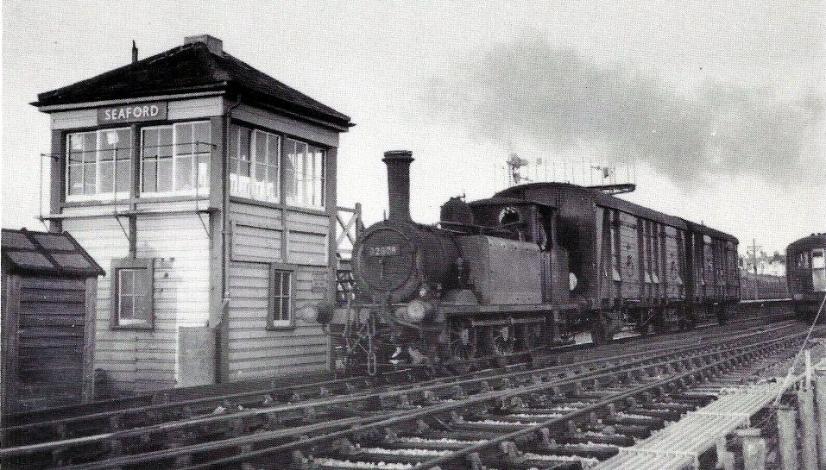
I just remembered another incident involving a fireman who was leaving Seaford with a coal special bound for Galley Hill. His name was Sandy Owen on leaving Seaford he went over the back of the tender to check the water and hit his head on a bridge, but being as tough as old boots he tied a wiper around his head and carried on to Galley Hill. He finally transferred to Waterloo.
One other story about shunting at Seaford yard it was common practice for the fireman to ride the brakevan down pass the weighbridge when the shunter unhooked it, on this occasion I looked out the side window for the weighbridge an put the brake on only to find I had come off the rail and run down the road! We remedied it with a length of rope tied to the engine.
The Locomotive Department Coal which we worked from Ashford to Brighton of course it was only for St Leonards Eastbourne Brighton & Newhaven Depots. The bulk of the coal from (Tilmanstone, Snowden Chislet, & Betteshanger Collieries) went via Redhill or Hither Green. To Bricklayers Arms where it was sent to other depots on our region.
Newhaven Railways had their own Water supply from their pumping station beside the Flying Fish Public House in Denton and it is still there today but I think it now supplies.
One other story about shunting at Seaford yard it was common practice for the fireman to ride the brakevan down pass the weighbridge when the shunter unhooked it, on this occasion I looked out the side window for the weighbridge an put the brake on only to find I had come off the rail and run down the road! We remedied it with a length of rope tied to the engine.
The scrapping of wagons & coaches at Newhaven and Polegate up side required a lot of train movements for us at Newhaven. We picked up wagons and coaches from all over Sussex to be broken up. A lot of wagons were stored at Kingscote and Ardingly Up Road. The underframes of the coaches were used for the first EP stock 57s Haps, Cigs, Bigs & Veps and we used to take them to Eastleigh to be done up. The wagons loaded with the scrap iron we took to Mitre Bridge which was quite a punch up North Pole bank. I never found out where all the brass went. The fires at Newhaven & Polegate seemed to burn for years. A bit like the fires at Drayton after all that landfill.
THE OXTED LINES
At Newhaven, we had a lot of workings via Eridge & Oxted because of course they had only juiced from London to Sanderstead so steam prevailed until Dieselisation and most of the workings were covered by Brighton & Newhaven Men! This included an hourly steam Passenger service from Brighton to Tonbridge via Tunbridge Wells Central which when the steam finished we done some work with (Slim line D.E.M.U.s).We also had several passenger turns to Victoria & London Bridge via Eridge and Oxted, which none turn which was returning with the 16:40 to Eastbourne via Oxted, Eridge, Redgate Mill Junction and Hailsham (the Cuckoo Line)
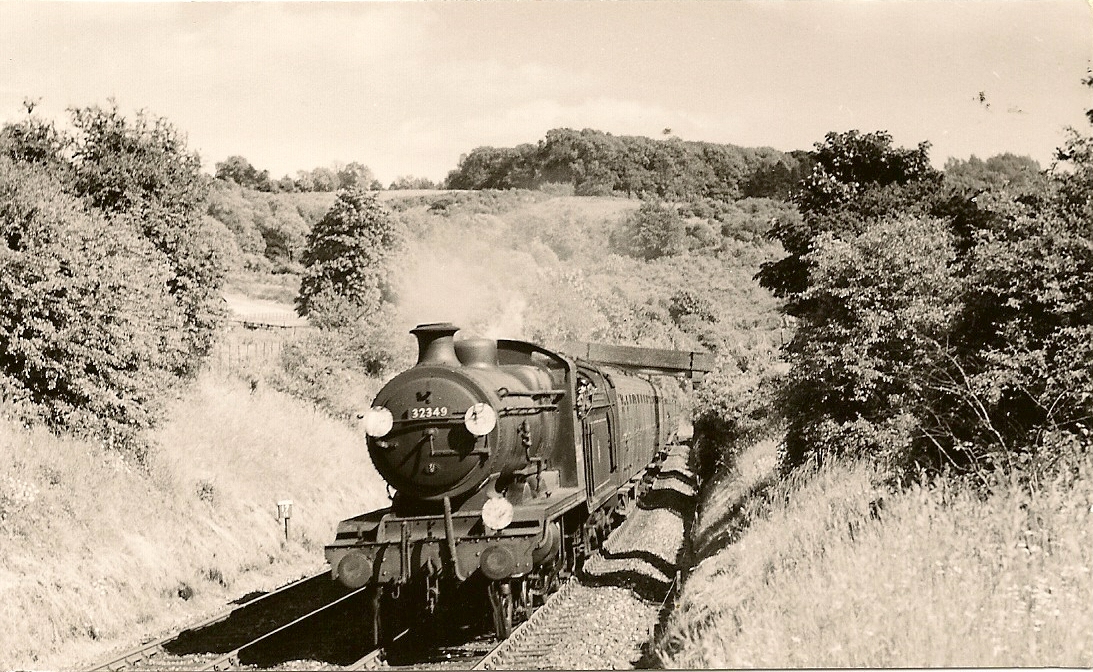
RON TERRILL COLLECTION
3.28 p.m. Haywards Heath - London Bridge near Woldingham.
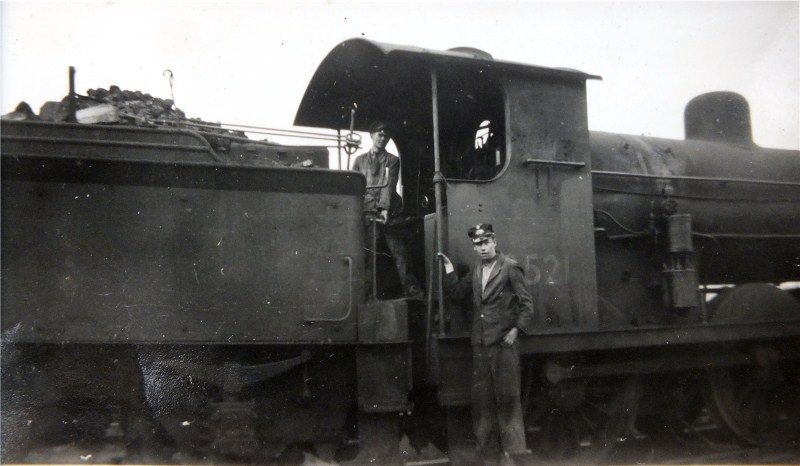
Ron Terrill Collection
Ron Terrill & Brian Simpson at Newhaven in 1955
photographed with a class ‘C-2X’ which were commonly known as Vulcans
Shunting horse boxes at Lewes was a common occurrence, shunting them from the cattle dock on the down Lodon side and attaching them on to the rear of the 'race specials' trains on the up London platform. The horse boxes would be going to the racecourses such as Gatwick. The racecourse at Gatwixk is now part of the airport and the station complex. We would also work other 'horse race specials' which would involve working race trains to Lingfield via Haywards Heath and Horsted Keynes; we usually had a locomotive commonly known as a German pulling these trains.
I remember as a passed cleaner I was called upon to fire to a ‘Top Link’ driver to work a ‘spud’ special to Blackfriars with a radial tank engine E5x class. We had a good journey to London Blackfriars were we picked up a pilot-man from Cricklewood loco and continued on to Dock Junction (just North of St Pancras). We left the train there and returned light engine to London Bridge. At London Bridge we picked up two mail vans and run fast to Redhill where dropped them off and then we run light engine back to Newhaven loco.
We had regular stone/aggregate trains, which included ballast trains. The ballast trains were loaded full of old used ballast; the old ballast was used to help reclaim the land on the shoreline between Tide Mills and Newhaven's East Quay. The aggregate train continued to run up until to the mid-1990s (worked to Crawley New Yard) and the ballast trains continued to run until the mid-1980s.
We worked 'Brick Trains' them from the various Brick yards in Sussex such as :- Newick & Chailey, Crowborough, Cooksbridge, Keymer. Berwick and Southwater. We worked these trains to Bricklayers Arms, were I suppose they trains were for rebuilding London?Several goods trains run from the Harbour station to Battersea & Bricklayers Arms which included the 'mail trains' (hence the mail boats). The incoming trains were agriculture vehicles (such as tractors and combine harvesters etc.) for export and even cars for export, which had to be loaded by crane on to the boats, before the roll on off service started .
I have recognised myself on several engines in the London area that I didn't know existed. One in particular photograph was an engine I left in Stewarts Lane Depot and made a run for it, The engine was 31280 C Class which I had worked a load of Flowers & Fish from Newhaven to Battersea Yard . We went to Stewarts Lane to dispose the engine, we had turned the engine and taken water, and then we went to the coal hopper! My mate went off to find the coal man and came back saying he had gone home! My mate said it must be easy to operate the hopper so off he went and next thing I knew we had 22tons of coal on our tender. My mate could not shut it off, so we made a run for it to Victoria.
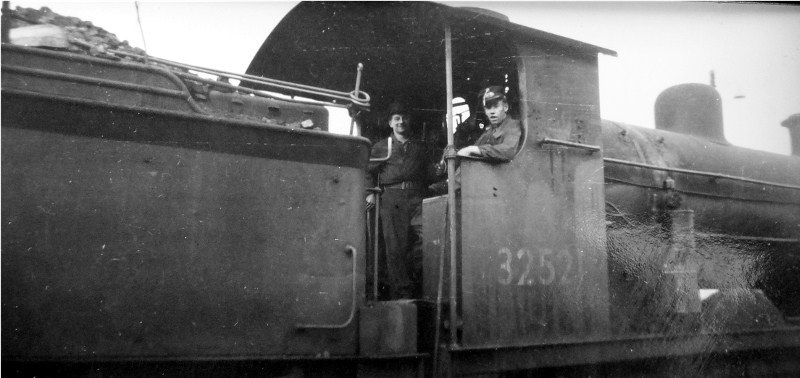
Ron Terrill Collection
Ron Terrill & Brian Simpson at Newhaven in 1955
BALLAST TRAINS
Under British Rail we did all our own repairs to the tracks (no contractors then). On one occasion we went by taxi to Barcombe Mills station, it was a terrible morning with about 6 inches of, snow and we arrived there after about a 40 minutes taxi journey. On arriving we went to the signal box at Barcombe Mills at about 05.05 a.m. We had a quick cup of tea, and asked the signalman where our train was, he said "they were working between him and Isfeld but as he had only just come on duty he was not sure exactly where”. So we started walking towards Isfield where the ballast train should be. Finally we arrived at Isfield station and went into the Signal Box only to find that the job had packed up early and the ballast train was heading towards Lewes. So we got a local taxi and headed of to Lewes where we finally relieved the crew on Every's Bridge (near where Lewes Tesco is now situated). We then took the train on to Three Bridges, where all the ballast trains were stored.
I recalled another occasion when we had a problem on to relieving a ballast train this time we had to relieve a ballast train at Lewes with Tom Holder, the ballast train had been working at Culver Junction all night, when the train arrived at Lewes, Tom was filling up the tender with water. As we had a Q1class locomotive, I asked why he was taking water as we only needed to get to Three Bridges, Tom replied the tender was empty (alarm bells were starting to ring in my head). Sure enough as we left Lewes on the steep climb up towards Cooksbridge, the water level in the boiler was dropping rapidly and with both injectors fully on I could not stop the level from dropping and we had no choice but to stop the engine, just short of a welcome bridge, about half a mile past Cooksbridge. We then got on with the task of chucking the fire out to prevent the plugs from dropping. It turned out that the main steam pipe had been fractured in the night using excessive steam and water. We were finally rescued by driver John Knight and his mate, they were on a ‘N’ class locomotive (I think John’s mate was Jerry Elliot) no relation to Percy Elliot the Coal crane operator at Brighton loco). We never got to Three Bridges yard with our train, as we were dragged to Plumpton and we put the train away into the sidings.
Whilst relaying track between Hamsey Church & Isfield, the old sleepers we took up were cast iron approximately one inch thick and curved on the edges. The rails were bull head and we replaced everything with wooden sleepers, baring in mind it was done by men with picks and shovels, no JCBs. The following night we took a train loaded with ballast (stone) to be unloaded all by hand from ordinary wagons. They finished the job of unloading in seven hours! We helped a little between trips to and fro checking our boiler. Certainly back breaking work.
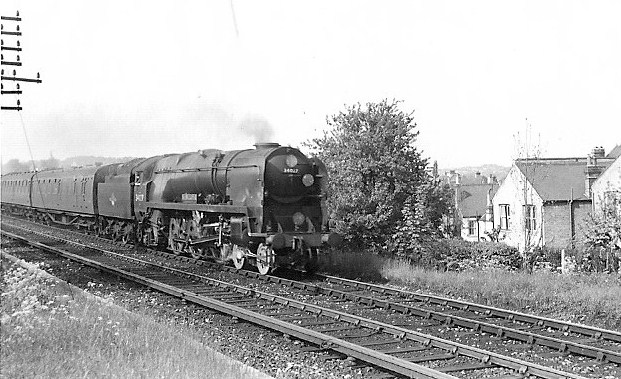
GOING ON LOAN
On many occasions during my loco days, I was booked 'on loan' to various foriegn loco sheds on the Central Division of the Southern Region, working at such Loco sheds as Fratton, Bognor, Eastbourne, Tunbridge Wells West, Redhill, Norwood and Stewarts Lane. By going 'on loan' enable me to achieve another firing/driving credit towards my next rate of pay, we had to achieve 294 credits before going on to the next band.
I remember going ‘on loan’ to Tunbridge Wells West, when I got there the missing fireman turned up and the foreman asked if I was willing to do some shed duties which meant chopping up sleepers for lighting up the Engines, easy job for an extra firing turn then returned home on the cushions.
I also remember going on loan to Eastbourne and lost my way walking around the streets of Eastbourne trying to find my way to the loco shed, we were not allowed to walk along the track. I eventually arrived and went with Eastbourne driver Wally Wood and our loco was a radial E4 tank, we worked a goods train to the Eastbourne gas works (Tescos now occupies the site) on the 'Crumbles' branch line, it was there where I saw for the first time a dry steam engine called 'Anne' (photo left) that they used for gas working only. The steam was provided by the gasworks by a pipe which was connected to the engine which had no firebox it otherwise looked and worked like a normal steam engine. Eastbourne men must be familiar with them.
They were just like kettles!
In the early 55, I went on loan to Nine Elms on a pilot job and saw a cleaner called Joe Brown who became a pop singer (with his bruvvers) The job was the Lamberth Pilot taking coal into Battersea Power Station!
When Ron started at Newhaven Shed, was a sub shed of Brighton shed (75A) and the Newhaven Shed had an allocation of about 13 engines which included :-
3 Class H2 Atlantics 4-4-2,
2 Class C2x 'Vulcan' engines 0-6-0,
5 Class E 'Radial' tank engines 0-6-2T and
3 Class A1x 'Terrier' tank engines 0-6-0T.
Information about the engines allocated at Newhaven is from Ben Brooksbank (a railway photographer in the 1950s/60s)
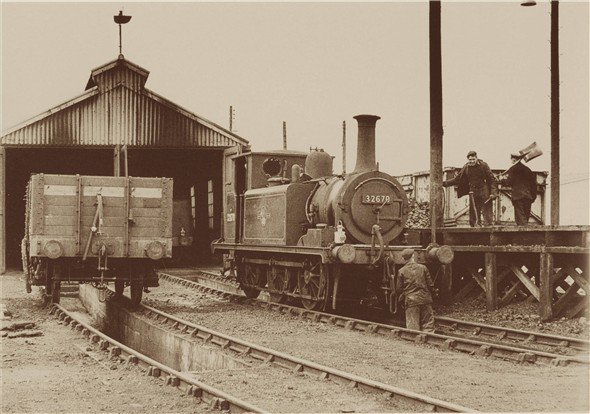
RON TERRILL
Memories of my days at Brighton Loco Shed as a Fireman and
then returning back to Brighton Loco as a redundant Passed Fireman in September 1963
By Ron Terrill
Engine-men who worked through the war were the pillars of society and were treated with respect especially by their commuters even in my early days I was treated well by some of my commuters, On several occasions whilst working around the Oxted road to London Bridge, if we had a rough trip a commuter who guessed what was going on would come up to the cab and thank us for the journey and slap a Half Crown in our grubby hand.
The changes of workmate attitudes, I think started about the 'Green Era' c1963/65, for many years aiming to be a Top Motorman and then suddenly overnight we were given a green uniform in preparation for the change to diesels. A lot of men stopped any work on steam because they didn't want to get their uniform dirty. I had steam in my veins, so I volunteered for steam duties even though I had learnt D.E.M.U.'s etc., so many men wanted the clean job.
When I transferred to work at Brighton Loco, my only means of transport was a push bike, which I used for seven months until I got my first motorcycle a Francis Barnet 150cc. As a fireman we did not have a residential pass for the first three years for travel to and fro work! Of course I had the option of buying a train ticket each day (no way) besides with the shift work I was not prepared to stay in Brighton overnight to catch the first train in the morning snatch a few hours sleep and back to work again. We did have five free tickets and one continental pass, but they where for holiday use, and some privilege tickets. Of course when I became 17 I took my driving test (car) and then bought my first car from Frank Heritage!
When I first came to Brighton and before I was teamed up with Harry Bolingbroke, I was asked to go on loan for the week to Fratton. On the Monday I arrived at Fratton and reported to the Foreman who said would I be prepared to go pass to Ryde and work to Ventnor and back one trip? Of course I jumped at the chance to go (abroad). I caught the boat to Ryde pier head and relieved the Fireman and away we went all stations to Ventnor as I was approaching Shanklin I realised that the return journey would be Motoring and I had not been trained (at the time). I told the Driver and he said he would show me what to do and would take a chance with me! All went well and I reported back to the Foreman at Fratton, He said to me tomorrow I will put you on the Hayling Flier so you will report at Havant and do 3 trips to Hayling & back with 1 balloon coach and run round each time, and do it for the rest of the week, you will have 32678 which I was familiar with. Then home on the cushions.
On the Tonbridge to Brighton Passenger trains, we often had Right Hand Drive Engines, usually 'N Class,' or 'U Class,' apparently they were built like that, because on the South Eastern, they had a lot of signal on the opposite side of the track, because of the winding roads.
I can’t remember if I mentioned a couple of memories of working at Kingston Wharf (Shoreham) but my first time at Kingston Wharf I was on a B4 class when I had a Guage Glass blow on the climb up to the weigh-bridge with two wagons of coal!
I remember many times working on 31556 P class which was the regular engine for the job. I often used to wonder why they didn't use an AIXwith a slightly smaller wheelbase because of the sharp curves around the wharf .
When I arrived at Brighton loco depot (for a second time) after the closure of Newhaven loco, this time as a 'passed man', I went into the 'Motor Link' and was working push/pull trains to Guildford via Steyning and Horsham. We always had a Class M7 know to the loco-men as 'Jerusalem Donkeys' (It is believe there nick-name came about because, they were so powerful, that providing you had steam they would never let you down. We used to call the 'C' Class locos 'Canterbury Hill Climbers' for the same reason.
Being a 'Passed Fireman' at Brighton and I was sent on all sorts of jobs, mostly on loan to other depots. One job I remember well was the 6.00 a.m. freight from Norwood to Brighton Top Yard, I nearly always had the same fireman, Dave Strudwick (who later became a Train Crew Supervisor at Selhurst) he was an exceptionally good fireman and I never went without steam with him. We quite regularly used to have an ex River class No. 31890, it was possibly one of the last steam engine at Norwood (could have been 31925 W class).
At Brighton loco at this time we still had a number of van trains which were still steamed hauled. There were the 11.18 vans to London Bridge, which on arriving at London Bridge, we would leave the vans there and go light engine to Victoria via Crystal Palace, tender first. On arriving at Victoria we then work a passenger train back to Brighton via Oxted, Eridge and Lewes. We also had many other van trains which we worked in reverse, such trains such as the 03.25 a.m. paper trains from London Bridge to Brighton, also the 03.40 a.m.to papers Eastbourne. On arriving at Eastbourne, we would picked up a coach and worked a passenger train all stations to Hailsham and back to Eastbourne, before running back to Brighton with a couple of vans.
On the paper trains we carried the newspaper men who rode down on the train sorting out the papers en-route. They always enquired who the driver was going to be so they whether to expect a rough ride or not on the way down.
The papers trains continued until the mid-1980s when the newspapers were transferred by road.
On several occasions on Market days at Steyning, we would unhook the train in the platform and then we would go and pick up a wagon of cattle and return back on to our train. We would then carry on to Horsham where we took the cattle wagon to the cattle dock, after returning back on to the train we would then 'Motored' back to Brighton.
I retained my Newhaven route knowledge which included signing over to Ashford, this still enable me to work trains over the Romney Marsh after I had transferred to Brighton loco. My fireman for the week was Hamish (Jock) Lockhart; in November 1963. We were taking redundant steam engines to Ashford, mostly for scrapping. But on this particular we had a ‘USA’ class tank engine from Eastliegh to Ashford No. 30065, which had been done up in Southern colour’s (malachite green) and named ‘Maunsell’. After leaving Rye we travelled about 3miles, when suddenly the wheels locked solid. I examined the engine and found two axle boxes hot (apparently a common problem with this class of locomotive when travelling some distance). We were about 5 miles from Appledore and there are no telephones or roads on the marshes. I decided to take the drastic measure of using the engine’s spray pipe directed onto the axle boxes to attempt to cool the bearings. Luckily it worked, so we carried on to Appledore, where the signalman put us into the sidings were we filled the boiler, and then dropped the fire.
My favorite trains were the stock trains from Lancing works to New Cross Gate we usually had a Class L1 or a Class E1 or maybe some sort of mogul locomotive, they were good engines strong, and were good steamers. We would run fast to Horley sidings, where the examiner would check for hot boxes, and if they were ok we carried on to New Cross Gate where we would leave the train and turn the engine and go light engine back to Brighton.
The Chichester goods from Brighton Top Yard, run via Preston Park with the first stop being at Portslade to pick up from Ronucks (The Polish people) and then on to Shoreham to pick up. On arriving at Lancing for any refurbished Passenger stock from the Carriage works and then the next stop was at Worthing goods shed. Then we were fast to Chichester in the sidings. We had to turn the engine via the triangle which was in the yard and then behind the up platform, there was no turntable at Chichester. We would then pick up a mixed freight and return back to Top Yard.
I remember going out with a ‘C class’ 31725, which had scrapers for the conductor rail fixed on the tender axles, and of course the snow plough in the front. On one particular day we had to rescue a ‘2bil’ stuck between Cooksbridge and Plumpton in the deep snow, we ended up getting stuck ourselves, it eventually took us 2hours to clear the snow. We had to cross over at Plumpton and go tender first to give the ‘2Bil’ a shove, to get it going. I don't know who the driver was except it was a Seaford man
I recall Brighton Driver Bert Batcheler, who on early turns brought fish and crabs into the depot and spent about half an hour cleaning and gutting the fish, we were all grateful for the freshness of the fish, Bert had connections at the markets. Later on I run into Bert at Eastbourne loco, I was firing to Harry Bolingbroke, when we had to take a light engine 31817 over to Eastbourne, to work back with the Birkenhead. On arriving at Eastbourne we went on to the loco for water. We saw Bert there and Harry asked him, why you are not working the Birkenhead. Bert had got his engine (Mogul 32540) stuck his engine on the turntable. This engine had been fitted with an experimental brakes called an Orlikan system (which was the system they later used on the class 47s), and had not secured the engine properly, and the engine had run off the turntable and into the field (partially). That was the reason we were sent over to Eastbourne with our engine.
There used to be a 'Motor-Rail' service coming from Stirling in Scotland, which was hauled by a class 45 diesel, because we did not know this class of locomotive and the locomotive was not changed over, we were booked to conducted the train from Willesden Junction and the same on its return.
I remember as an appointed driver, I came off of my turn to go back on the shovel because the fireman on the Salisbury refused to work . It had came to Brighton with a Standard 5 the night before, It had been worked with a Warship diesel, for several weeks. I broke a bit of tradition by firing to Captain Peacock, who was an M.P.I. at the time, I don't think he had his job long. We returned from Salisbury with a Crompton, I can't remember the date but it must have been the mid 1960s.
We were always self supervised as steam men and we had the power to refuse even railway officers on the footplate if it interfered with our duties I used this power a few times! even though I was flexible. Later on when we had a lot of learners I was glad to sit on the cushions whilst they took over.
When we used to work goods trains from Brighton Top Yard to Kemp Town, our first stop was east of Ditchling Road tunnel, where we left the train and took some of the wagons of cattle into the abattoir sidings, then back on the train. we then called into Lewes road sidings to drop off coal wagons and proceed on to Kemp Town. At Kemp Town we would run around the wagons in the platform and then we would pulled up inside of the tunnel. Situated at the Southern end of Kemp Town tunnel was a ground frame. The ground frame was operated by the shunter and inside the tunnel there was a gong which was operated by a lever from the frame. The shunter would operate the gong using his lever and inside the tunnel we would get two bangs we would set back out of the tunnel and the we commence shunting. After we had finished the shunting we would then return back to Brighton.
Memories of some of our bad practices!
When we had to shunt in the Loco Yard and if we were on our own, sometimes we would take an engine down to the stops to go back in another road, so we would jump off the engine to operate the points. Sometimes it entailed spring points in which case we had to carefully open the regulator to move very slowly and go to the front of the engine to hold the point handle and put the vacuum hose back on the dummy, as the brake pressure built up the engine moved foreword over the points and when it cleared we let go of the point handle and pull the hose off of the dummy of the engine, thus stopping the engine, then we had to scramble quickly on to the footplate to shut the regulator and apply the brake then go to the front of the engine to replace the vacuum hose then return to the footplate and drive normally back into the shed road. I Think I have just wrote my own Resignation!!!
One day a class 5 MT Standard turned up on the coal road with it's Brick Arch collapsed and blocking the rocker grate system. Alf asked me to try and hook the bits out with the pricker with no success then up came Cliff Highams with a load of wet sacks which he put all around the mouthpiece and with me and a couple of others standing by with buckets of water he crawled into the hot Firebox to unblock the fire-bars and came out like a bat out of Hell in a deluge of water we all threw at him when he shouted to us to throw it (he had guts to do that). It saved the day because that engine was back in steam within 2 hours and working to (I think Kensington) that afternoon. That is dedication for you.
Whilst I have mentioned Cliff Highams, I can recall two humorous stories involving him. Cliff once came into Brighton lobby at the top of platform 10, and entertained us all on the lobby table, about a drunk person that he met the night before, and he acted out being drunk on the table in full view of people on the platforms. The performance come to end when the foreman told him to stop!
The humorous occasion involving Cliff Highams, was when walked into the canteen at London Bridge and put his xxxx on a plate and said “Put some peas with this!”
Whilst I am on the subject of railway staff canteens, I was thinking about the Depots that had canteens, Brighton had a good canteen down the lift at the end of platform 9/10, mainly for Goods Shed workers. Stewarts Lane was very good, London Bridge was good too and so was Horsham. Other places we could always rely on a good meal were the Royal Mail canteens at Redhill & Reading, Other companies looked after there staff better than us. At some locations we had to find a good cafe! I suppose it was because we had no meal breaks owing to being 'double manned' all the time we were expected to work until we dropped! We did have some jobs like Night Ballasts that would over run and we had to improvise, one time in particular we had been working between Burnt Oak Bridge & Crowborough Tunnel and had been on duty for 7 hours and we had run out of sandwiches, so with the engine secure we had a walk around the fields looking for mushrooms or anything to eat. We came across some chicken and we managed to catch one! We took it back to the engine and cleaned the shovel with the spray pipe and cooked it along with a mangle wurzel (cross between a swede and a turnip) that we found in the field. The chicken was lovely but the mangle wurzel was as tough as old boots. Later on when we eventually took the train to Three Bridges and went light back to Brighton (we had been on duty for 14 hours ). We later found out that the chicken was one that belong to a farmer that Trevor Fielding used to help whilst doing one of his small jobs in return for some fresh eggs, that he used to bring to work to sell. We were always grateful for newly laid eggs.
I think I may have put my foot in it again!!!
I will tell you now about an incident that happened to me Christmas 1963. I was working the Top Yard pilot with a 350hp diesel shunter. We had to take five coal wagons down to Lower Yard, on arriving at Lower Yard, the shunters had to hold over two sets of catch points before they would signal you to move ahead slowly. As I moved about three lengths, I saw the end wagon jump in the air; I stopped and secured the engine then walked forward only to find I had squashed the Shelley’s coal lorry between the truck and the coal bin, with the driver stuck inside the cab. We called 999 and two fire engines and an ambulance turned up to cut him out. The next day Christmas day I drove in to Brighton Royal Sussex County Hospital to see how he was and found he had been discharged no major injuries.
I remember going 'on loan' to Tunbridge Wells West, and being a 'passed man', I therefore was trained for 'motor working' (push/pull), and we had an 'H' Class tank engine. I worked the train over to Three Bridges via East Grinstead calling at Groombridge, Withyham, Hartfield, Forest Row, East Grinstead (H.L.), Grange Road, Rowfant and terminating at Three Bridges (in the down bay platform), and then we returned back to Tunbridge Wells West. Back at the 'Wells' we then formed a train to Oxted via Ashurst Junction, after arriving at Oxted we returned back to Tunbridge Wells West. Then I was pass back to Brighton on the cushions.
BALLASTING
On several occasions I took the Viaduct inspection unit out on nights, on one such night I had a spam-can (Q1 Class) to Ouse Valley Viaduct, on arriving at the site of work we set up the unit and secured the engine. I asked the gaffer in charge, if I could ride the unit under the arches with the team and he said yes. I found it a wonderful experience and after that I often used to ask again. Since that time I have been under London Road (Brighton) Viaduct and Shoreham River Bridge. We also took out gauging trains to check any movements in tunnels; they were long jobs but easy work for us crews as it gave us, a rest from the heavy freight work we were normally doing.
Three Bridges was the main ballast depot for the Southern, which done most of the track relaying trains. The best jobs were when we went to Woking yard to bring bulk trains of rails or hoppers back to Three Bridges, we usually had either a class S15s, N or U and a Spam Can. The best engines for the heavy loads involved if we had S15s we had to take them to Redhill depot which seemed to be the keepers of the big freight engines.
I always let my fireman/secondman do half the driving and this particular turn involved working a van train to Redhill then returning to Brighton with a heavy freight, one of us would work the vans to Redhill and the other would work the freight back. On this occasion I did the vans up, and my mate did the freight, we had left on time and called in Three Bridges Yard to pick up more wagons. As I was doing the secondmanning, I went to the lobby on the up side to make the tea. By the time I returned back onto the engine, the shunting had finished, so we had a cup of tea. When we got the right away, I exchanged hand signals with the guard and away we went! All went well to Hassocks where I lit up a fag put my feet up and nodded off next. The next thing I knew was when my fingers were burning I awoke to find we were past Clayton box and doing 45mph and my mate was asleep. I put the brake on and realised we had no fitted head (we were in the xxxx). I blew the whistle to let the guard and signalman know we were in trouble, someone must have heard our prayers, because when we got to Preston Park the signalman had set the road down the spur and informed other boxes we were out of control. We finally stopped at Klondyke sidings which were situated beside Lancing Carriage Works (which refurbished all the passenger steam stock). Where after a change of underwear, we propelled the train wrong road to Shoreham, and then we took the train to Beeding Cement sidings, where we left the train and then took the engine light back to the depot. I did not hear anything about this possibly because it was during the night.
I have briefly mentioned Lancing Works, which used to be served by its own train known as “ The Lancing Belle”, which run between Brighton to Lancing Works (run straight into/out of the works itself). It consisted of 12 coaches and was hauled by an E4 Radial tank and sometime was double headed by an L class. Apparently it became double headed when Driver Bob Shimmons set the timber mills alight at Kingston, so had the assistance of a bigger engine!
Bulleid Pacifics
At Brighton we worked on the Bulleid Pacific’s West Country’s or Battle of Britain’s locos, which we regularly worked on the trains to Bournemouth West or as far as Salisbury with the 'West Country trains'. The West Country trains on arriving at Salisbury, our engine would come off and then the train would continue on with another engine to either Cardiff or Plymouth. But sometimes the Bulleid Pacific’s were replaced by ‘Western engines’ like ‘T9s’ or ‘Manors’, I remember we had a 'Western engine' No. 7816 (Granville Manor). With the Western engines, we sometimes had trouble with their vacuum creating 23 inches (instead of 21 inches), which they worked with on the 'Western', this causing the brakes to drag on the 'Southern' stock. We would often had to pull the cords to release the brakes. We used to stop at Fareham and have 3 more coaches put on the rear, which came from Gosport, and if we had a ‘Western engine’, the guard had to pull the cords to equalise the vacuum brake pipe pressure.
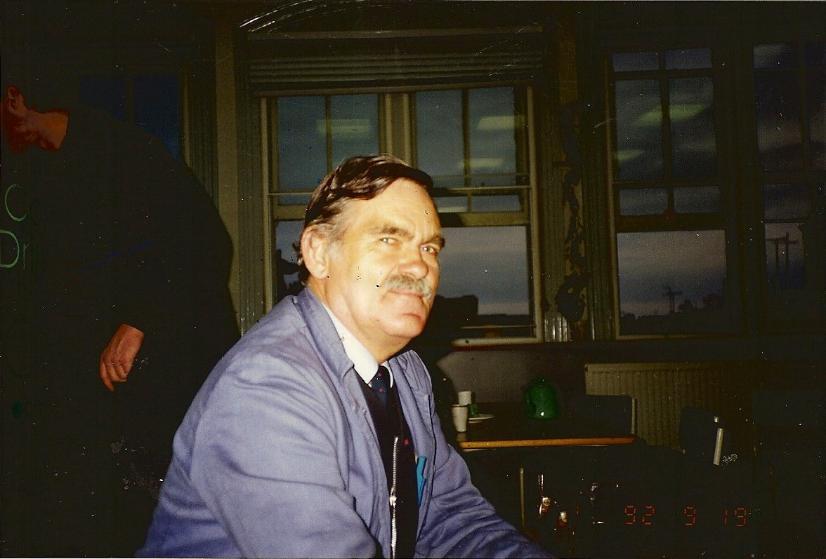
I can’t remember if I mentioned a couple of memories of working at Kingston Wharf (Shoreham) but my first time at Kingston Wharf I was on a B4class when I had a Gauge Glass blow on the climb up to the weigh-bridge with 2wagons of coal!
I remember many times working on 31556 P class which was the regular engine for the job. I often used to wonder why they didn't use an AIXwith a slightly smaller wheelbase because of the sharp curves around the wharf .At Brighton as a 'Passed Fireman,' I went diesels training at Stewarts Lane to learn 350hp diesels shunting, 204hp drewry diesels shunting locos, and D.E.M.U.s (Oxted, Hampshires and Hastings), they were all basically the same. I also learnt Crompton Parkingsons also at Stewarts Lane and later on electro-diesels which saw all my diesel training completed. I eventually got my made up to driver on the 2nd May 1966 at Brighton Mixed Traction.
MY EARLY DAYS ON THE JUICE
On the 6th January 1969, I transferred to Brighton E.M.U.T. where I had to learn arrange of E.M.U. stock including the early various main line & suburban units (Subs (Marys), Nelson & Puls & Pans) at Wimbledon and at Selhurst I learnt the then, modern E.P. units including various main line & suburban units (1951, 1957 & 1963 stock (E.P.B. units, C/BEPs, C/BIGs, BIGs, Veps, etc ).
In my early days on the E.M.U.’s in the late 60s, I remember working on the Redhill-Reigate shuttle with a two car Metropolitan - Vicars & Nutcracker unit, and on leaving Reigate Bay platform I had moved about 5 feet when the road spread and I became derailed, Fortunately I didn’t foul the main line.
On another occasion I worked a train to Victoria where we detached the rear 4 cars and worked all stations to Coulsdon North on returning to Victoria I reached Purley Oaks where a train (8 car Mary) had come to grief. I contacted the signalman and he asked me to investigate why he was there so long. I secured my train and walked forward to the train (about 50feet ahead) as I walked along checking the shoe fuses as I went on the near side all OK. I met the driver who said it was impossible for an 8Sub to get gapped! I checked the fuses on the other side and they all had blown! I told the driver to paddle up the front 4car while I detached the power jumper between units. After changing the fuses in the front unit I reconnected the power jumpers removed all paddles and power was restored with minimal delay.
SEASIDE SPECIALS
I was thinking about all the specials we used to run under British Rail. We used any stock available in the summer time to run Seaside Specials from London Stations to Brighton Summer weekends! I worked quite a number of these trains. They must have been well advertised in London because they were always packed solid! If we departed from London Bridge we would call all stations to Norwood then run fast to Brighton. The same applied if we went from Victoria. And some went via Crystal Palace all stations to Norwood/Selhurst then fast to Brighton. The return journeys also went fast to Norwood or Selhurst then all to London . Thus missing East Croydon. I remember one of these trains made up off 6x2 Bills and another made up off 4x2 Lavs and 1 Mary (4 car). I am sure there toilet facilities were there buckets and spades (they enjoyed there Seaside day out) and I know there ticket for there trip was loose change. Still it got packed trains running to the Seaside. Obviously at that time we had more spare men available to cover the extra workings. The private company’s wouldn't do that today.
THE CARING SIDE OF THE JOB
When I was driving E.M.U.'s I would often notice sheep (ewes) stuck on their backs in fields alongside of the track, I would make a mental note of where they were and on the return journey I would stop my train and run across the field to put them back on their feet. It didn't take long and I soon made up the time! One time on a Seaford shuttle, I left Lewes and between Lewes and Southerham, I saw a cow on the line in between the Juice rail, I stopped in time and told the signalman at Lewes of the incident and proceeded to lead the cow off the track, it wasn't easy because I had to walk back about 30 feet towards Lewes to the end of the juice rail then crossover the track in the other direction and walk back to where I found her, then over to the fence where she got over, I found a piece of rotten rope and tied her to the fence - then told the Lewes East signalman to call the farmer to collect the cow. I carried on to Seaford , on my return journey as I approached Southerham Junction, I could see smoke ahead the poor cow had walked back to the rail an electrocuted herself and blew the substation causing a long delay, all because nobody did anything about her. Another occasion in same area I run into Lewes and as I passed the box in the dark I hit some ducks I carried on to Brighton where I had one more trip to Seaford & back. When I left Lewes to go to Seaford I looked out on the track where I had hit the ducks and saw a couple of bodies. I went to Seaford and back to Brighton where I booked off duty. I drove back to Lewes and took a sack with me to pick up the bodies and to my astonishment one was still alive (2 dead). I took them home and mended the broken wings with splints and he recovered and lived with us for Four months until a friend of ours who has land, took him to live with her Mallards at Scaynes Hill.
MY IDIOTIC ANTICS
An embarrassing story of my idiotic antics. I had noticed that BR was renewing cable troughing at Durham Corner and I applied for some of the wood to make a shed! The wood was one inch thick by one foot wide and varied in lengths up to twenty feet, at the time I had a Vauxhall Viva Saloon with a roof rack. Anyway I took a saw with me and loaded up with. The smaller lengths and took them home on the second trip I loaded up several 20 feet lengths and tied a rope to the front and rear bumper to keep the wood steady. And drove home very carefully, Then I got cocky and went for a third load (all 20 foot lengths) and on the way home some silly lady drove out of a side road in front of me causing me to brake sharply and the roof rack collapsed and the roof came down trapping me in the car . Some people came to my rescue and removed the wood and a man got in the car back seat and pushed the roof back up with his feet. Thus releasing me from my seat, I put half of the wood back on and went home & then went back for the rest. No Problem
We use to work Departmental trains, such as the weed-killer trains which we used to run back in the steam days and later on with diesels, electric Snow & Ice units which in later years double up as Sandite trains. Being a ‘Night Owl’, I used to work the Snow & Ice and Sandite trains quite a lot; it tested my route knowledge, because it took us over some western routes as well as London suburban lines. Horsham, Sutton, Epsom, back via Hackbridge, to Streatham, then to London Bridge via Knights Hill and Bermondsey, London to Tulse Hill via Crystal Palace and back to London Bridge then down to Horsham via Sutton up to Three Bridges and back on home soil. I liked the challenge!!
With the amalgamation of the two depots I found myself having to re-learn diesels which included classes 37s, 47s & 56s and learn the new 319s units and Motor Luggage Vans.
Another memory I was working back from Bedford about 1994 and approaching St Albans on the up local when I saw a man waiving a red flag I place the brake handle straight to emergency, I was still doing 90 mph. Apparently they were cutting trees down from beside the track and one of the trees had fallen on to the overhead wire. As my speed was reducing, I could see the tree ahead so I pressed the pan/down button and by the time we hit it I managed to go under the tree and run into the station at St Albans where the train was terminated. I went over to the fast line and went home pass.
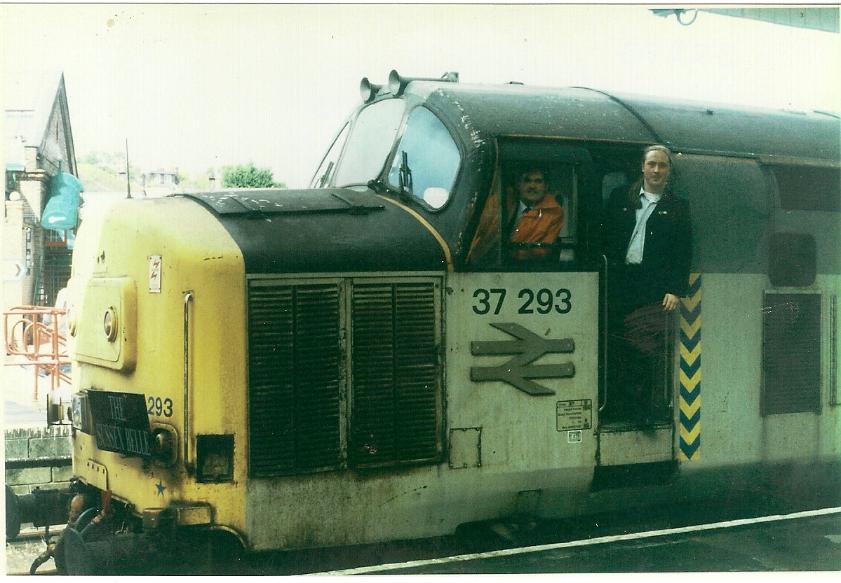
I was asked to do involving a class 37 diesel and I had to go to Selhurst and pick up a special coach and take down to Folders Lane (between Keymer Jcn & Spatham). On arriving at Selhurst I walked around the coach preparing it for the journey, and when I looked through the windows I saw a lot of bodies laying around covered in blood and bandages (it was a First Aid training coach). I worked to Folders Lane where I was met by a film crew and engineers who proceeded to derail my engine and coach to simulate a train crash. I was then told it was staged to coordinate emergency services in case a crash happened in their area! I knew nothing about this until I arrived on site. When all the action started I was told to go back to the depot and wait for orders! They never called me back and even so to this day I have never been told what happened to the ( film) I assume it is being used as a training exercise film for medical recruits. I don't know who had to recover the engine and coach?
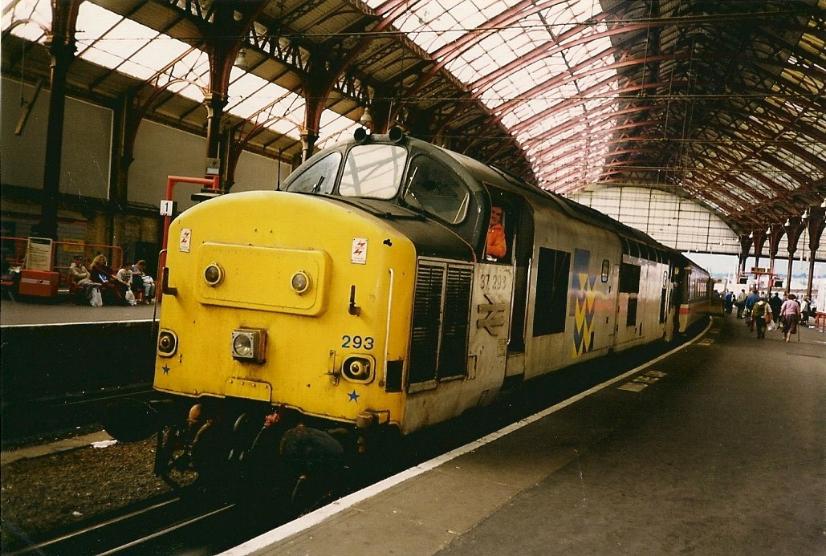
We had a severe weather forecast, Chucks asked me to take a 73 to Stewarts Lane and bring back as many engines as possible, because of the very bad weather that we were expecting! On arriving at Stewarts Lane the engines were all prepared and running, 6 in all. We were asked to leave 2 at Redhill, then 2 at Three Bridges, then the 3 for Brighton. On arrival at Redhill, I took the front 2 into the Loco sidings, they were a class 47 & 56, then went back to the station, to the leading engine, class 33, and continued to Three Bridges were we left a class 33 and 37. We then went back to the remaining engines 73, 37,73, and took them to Brighton were we left them at L.W.S., and walked back to the depot. On arriving back at the depot, I was told that Redhill men didn’t know class 56's, so I went back to L.W.S..to take one of the 73s up to Redhill to exchange with the 56 and bring back to Brighton.
I was Booking on one morning at 03:30 a.m. and going pass by Taxi to Clayton Tunnel North where I relieved a crew on a ballast train Headed by 2 class 73s. I eventually left the site on the wrong road to Preston Park then crossed right road to Hove where I could changeover from Diesel to Electric working to continue on route to Chichester Yard. All went well until approaching Drayton, where the Fire Alarm sounded and the leading engine failed! And we come to a stand. After isolating Fire Alarm system on leading engine I went to the leading cab of the rear engine and started the diesel engine and with my second man in the cab of the lead engine (with the emergency brake)we continued on to Chichester Yard with me driving from the rear engine. We left the dead engine on the buffers in the sidings and run around the train where we continued on to Three Bridges Yard to stable the train! After passing through Hove and climbing the bank through Cliftonville Tunnel we were getting slower and slower so I started the diesel engine and when the Electric overloaded I switched to diesel and it kept us moving until we got over the hump to Withdean where I could return to electric working. All went smoothly for the rest of the journey to Three Bridges considering the train loading was for 2 engines!
Ron Terrill Collection
Ron Terrill in the cab of a class 47, waiting departure at Brighton
with the 'Sussex-Scot' train.
Just after they fitted door locking on coaching stock, one Saturday whilst working the Brighton to Manchester train as far as Reading (via Redhill & Guildford). I run around the train at Redhill, I had the brake test and waited for the right away from the guard. When he waved the flag I returned to the cab and opened the controller on passing the three bridges between Redhill & Reigate. I looked back on the strait section, and saw a door swinging open ! I managed to stop in the platform at Reigate. I went back to the smashed door, I noticed behind me the platform fence was in poor condition so I pulled a couple of slats out and with a piece of redundant telephone wire and managed to secure the door satisfactory. I then told the Signalman at Reigate to have the fitters waiting at Reading we made up the time lost and run in to Reading 2 minutes early.
Another memory when CIGs first came to Brighton I worked an 8 car to Victoria but failed at Hassocks with loss of control. I checked all M.C.B.s and found all were correct on the first unit but still no control power, so I checked the rear unit which was all OK so I had a word the Guard and suggested that he should ride in the leading cab to Haywards Heath whilst I drove the train from the front cab of the rear unit calling at the three remaining stations to Haywards Heath where the train was taken out of service the front 4 car was berthed in the loop and the rear 4 car I shunted round to number 2 platform where I picked up the passengers and continued on to Redhill where (control)? had arranged a unit to attach to my rear so I carried on all stations to Victoria and picked up my normal workings.
We had a M.L.V. turn on nights, I had been to London Bridge via Redhill P.O. dock & back to Redhill. I was carrying urgent stuff for Tonbridge, the TCS asked me if I knew the road to Tonbridge and I agreed to take the train to Tonbridge on Battery conditions and return to Redhill, where I continued my journey on to Chichester via Horsham and back to Brighton. A good nights work.
When we were learning 319s and road learning to Bedford, at first we only had 317s from Farringdon to Cricklewood and back to Moorgate, hence we signed routes in Cricklewood Depot and St Pancras main line Station. Some of the routes came back from memories of steam days, when we use to work over some strange routes to places like Gospel Oak, Neasdon, Willsden & Brent. But in those days we had a pilot-man, most of the time . Some times we would we would be booked relief at Longhedge Jcn. And no one would turn up so we would continue on to Kew Jcn then on to Acton South to Neasdon, then Dollis Hill then Cricklewood. After about 2 weeks we got our first 319 but the only difference was they had no shoes.
I don't know whether I should mention fiddles, most worked perfectly but I did have a couple that went wrong. Once I spent the night at Guildford doing a fiddle with a Redhill man (but was successfully covered).
Another one that went wrong, I should have got relief at West Worthing and ended up sleeping in the lobby at Portsmouth Harbour. Happy Days!
We honoured our mishaps then, I often used my car to drive to Ore and leave it there, when we had to cover the last train Vic to Ore and then home pass on the first train in the morning. It often helped the driver on the Ore to Lewes train to get an early night, and for me I would get home at 3-45 am by car.
--------
There was a well known incident that involved Brighton Driver Dave Knights being hi-jacked on the up quarry when was working an M.L.V. from Brighton to London Bridge.
My job for the week was on the M.L.V. and Dave Knight, asked me to change Rest Days on the Wednesday he worked my turn and when he got to the signal on the entrance to Quarry Tunnel he stopped on the red and was held up by a man with a shotgun ! The man boarded the M.L.V. and found it only had Polish newspapers on board so he made a run for it. Dave was surprised but not hurt
( I suppose the moral of the story is don't change Rest days.)
